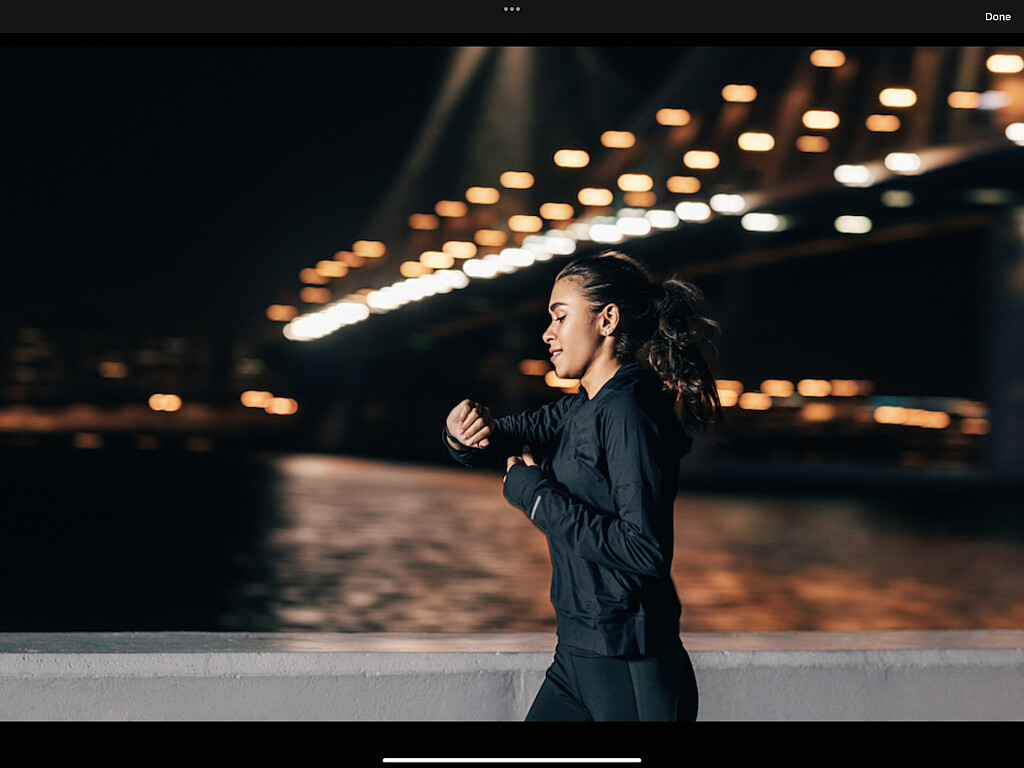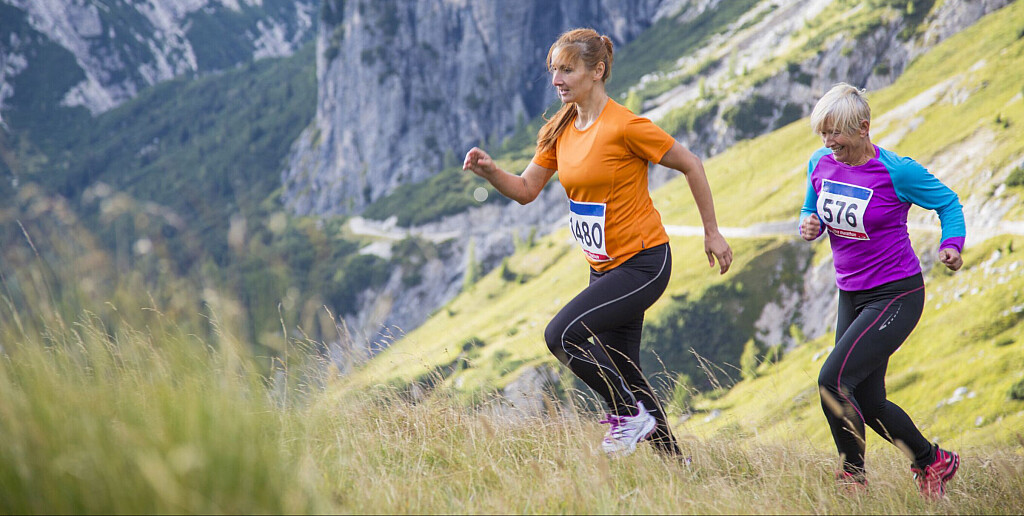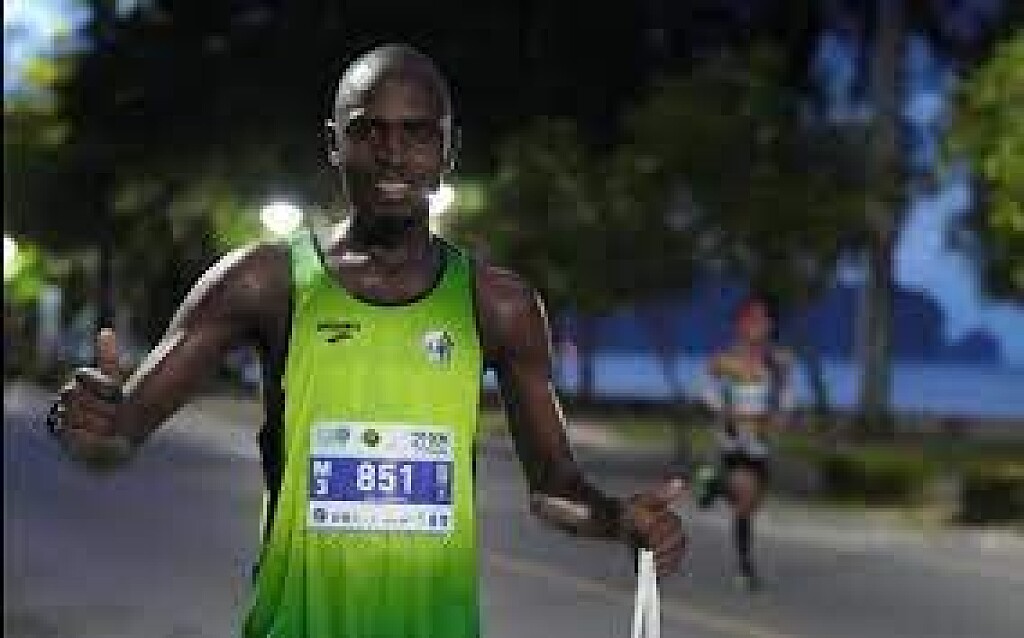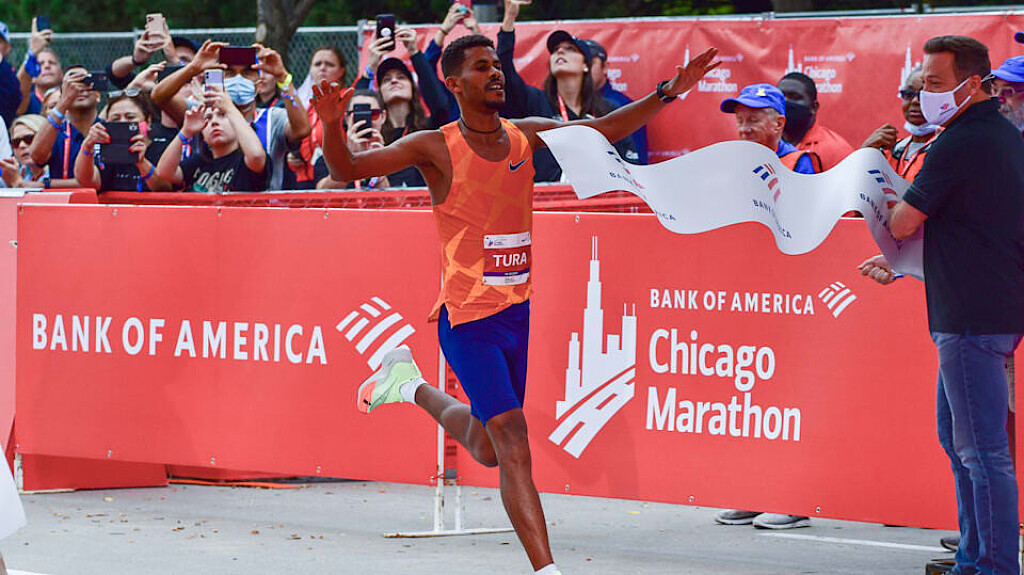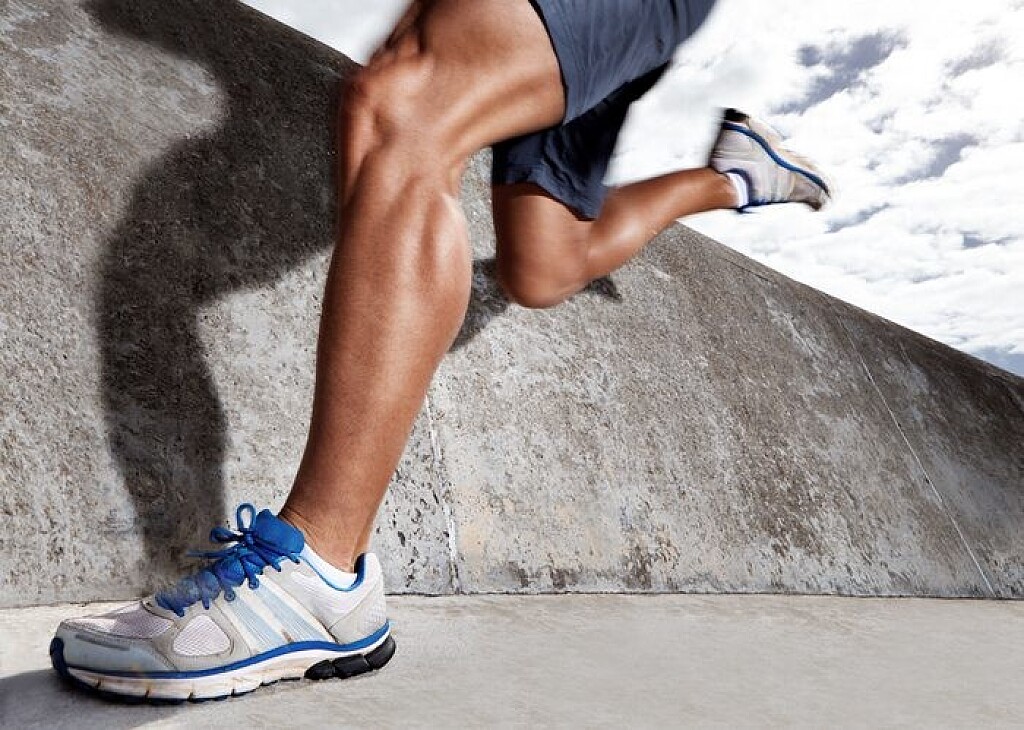Running News Daily
Top Ten Stories of the Week
2/3/2024
These are the top ten stories based on views over the last week.
7 Legit Benefits of Running At Night—And How To Do It Safely
It was around mile two of the Joshua Tree Half Marathon that I started to hear animals I couldn’t see. Was that a horse? I wondered (and hoped). The daylight was officially gone.
But I realized that as spooky as night running might be, it also creates an eerie kind of magic. Lights twinkled in the valley below the hilly path I was climbing, but all around me it was pitch black, aside from the few feet of sandy trail that each runner’s headlamp illuminated. With nothing else to see, all I had to focus on were my own footsteps and my breath—and how I could race through the desert as quickly as possible.
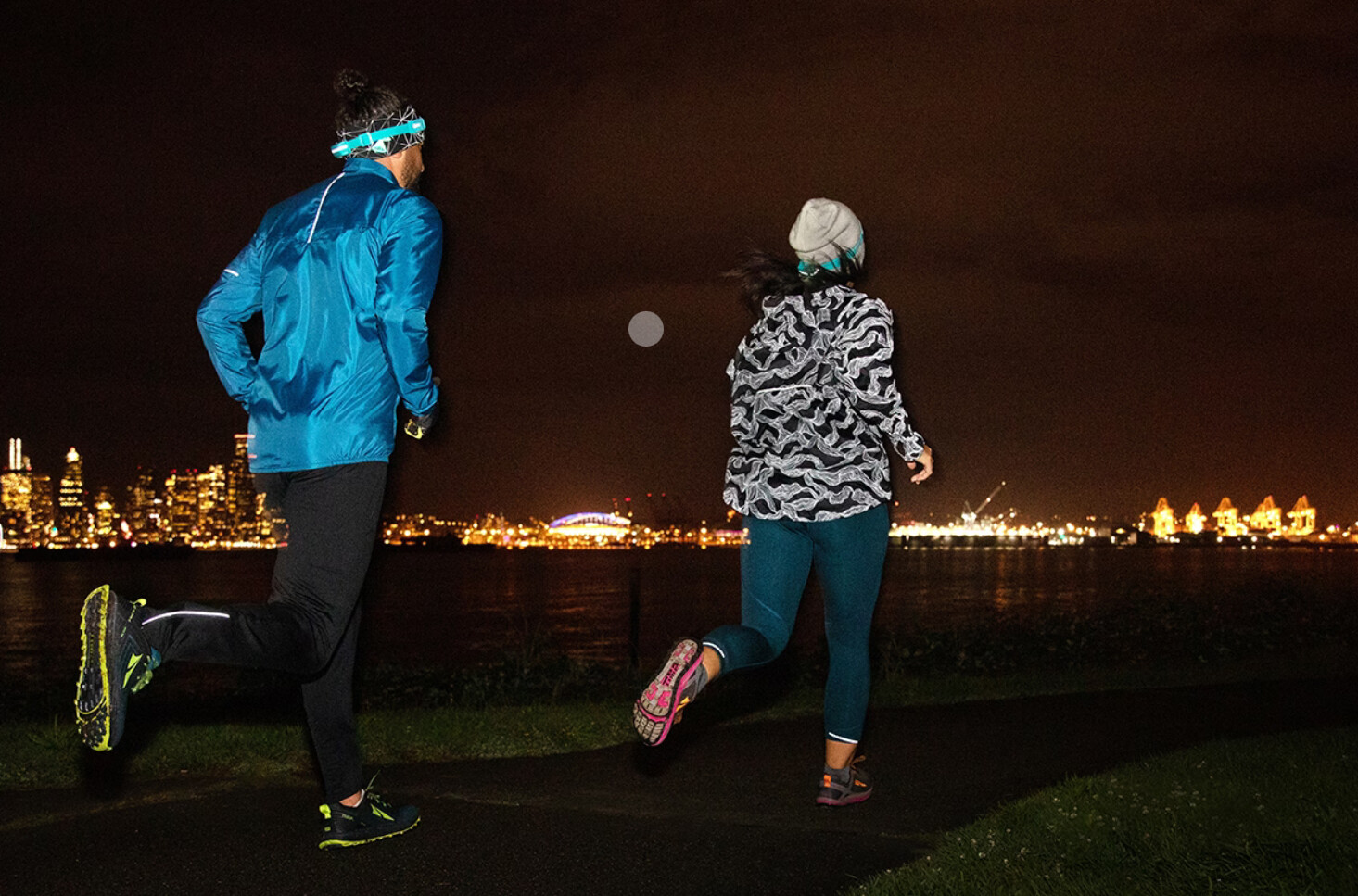
Amie Dworecki, B.S., M.A., MBA, Amie Dworecki, B.S., M.A., MBA, is a running coach and founder of Running With Life.
Brad Whitley, DPT, physical therapist at Bespoke Treatments in Seattle
Marnie Kunz, CPT2, USATF- and RRCA-certified running coach
Most long-distance races take place in the morning, but this half marathon starts right around sunset. Because the scenery of the course is a tad monotonous, the race organizers embrace the adrenaline rush you can get from running under the stars.
I joined as part of a press trip sponsored by Nathan Sports, Skechers, and Swiftwick. The experience reminded me that even when the days are short during the winter and pushing your pace after the sun goes down becomes the norm, night running can be its own unique adventure.
The more I looked into running at night, the more advantages I found—even if you need to take a few extra safety precautions when you’re lacing up.
The perks of running at night
What are the main benefits of night running? Here are a few of the top reasons to get in a nocturnal workout.
1. The temperature is cooler
Earlier in the day before the Joshua Tree race, I’d been cowering from the heat anytime the sun touched my skin. But once it was dark out, the desert air got so cool that my sweat-wicking T-shirt barely had any work to do.
As it turns out, temperatures around 40° Fahrenheit are ideal for long-distance running, largely because our hearts don’t have to work quite as hard to pump our blood to cool us down, according to a May 2012 study in PLOS One.
Even if the mercury doesn’t get quite that low after dark in a hot or humid climate, night running after sunset (or, alternatively, heading out before sunrise) is clearly the way to go to nab those cooler running temperatures.
2. Your body’s more ready to run
Running shortly after rolling out of bed can sometimes feel like wading through molasses. It’s no surprise why: You’ve just been lying stationary for hours, so your body temperature and mobility aren’t exactly ideal.
3. It might feel easier
The dark can be a secret weapon for runners. One August 2012 study in the Journal of Sport & Exercise Psychology on optic flow (our perception of our movement in relation to our surroundings) suggested that because we can’t see as far in the dark, we feel like we’re going faster because close objects seem to pass by more quickly than those in the distance.
Even though your watch might not record any speedier miles, running in the dark can be a helpful confidence boost when you get the sense that you’re zooming along.
4. Night running can help you sleep
How can running at night affect your sleep quality? Despite rumors to the contrary, there’s some evidence to suggest evening runs might actually help you get deeper zzzs.
An October 2018 meta-analysis in Sports Medicine found that as long as you finish running more than an hour before your bedtime, it most likely won’t mess with your sleep quality. Instead, it could actually help you spend slightly longer in those restorative deep sleep stages.
Anecdotally, some people say they also seem to fall asleep faster.
That’s something to experiment with, according to certified running coach Amie Dworecki, CPT. Everybody’s different, so you might need to find out what works best for your own circadian rhythm.
5. You’re likely better fueled
Eating can be tricky for morning runners—you’ll run better with some food in your stomach, but if you don’t give yourself enough time to digest, you might run into GI issues.
At night, though, you should be fairly well-fueled from noshing all day, Dworecki says. Just be sure to have a snack to top off your carbohydrate stores before heading out the door, says certified running coach Marnie Kunz, CPT.
6. It’s more peaceful
Depending on where you run, during the day you might feel like you’re playing Frogger with traffic and pedestrians, dogs, and baby strollers. At night, most of those hurdles typically fade away.
“It's really almost a meditative experience because of the quiet and solitude,” Dworecki says. “It can really add relaxation to your running.”
7. You have more options
Because you’re less likely to have a certain time you need to be back by at night than you would in the morning, it’s easier to choose your own adventure based on how you’re feeling. You can add a couple extra miles if you feel like it, or end early and walk home instead.
Running at night vs. morning: How to choose
Many runners swear by their morning miles. But obviously, the a.m. hours aren’t the only time to run. How do you know whether night or morning runs will serve you best?
For some people, it’s purely logistical: The best time to get in a run is whenever you can run. But if you have a choice, it might help to pay attention to the natural ups and downs in your energy levels.
“If you're a night person, you can actually feel better or more energetic if you're running in the evenings,” Dworecki says. Or, she adds, you might be able to use running to give yourself an energy boost at a time when it would typically dip.
If you’re someone who needs camaraderie to lace up, one of the benefits of night running is you’re more likely to find a group run to join after the work day, or convince a friend to join you for a few social miles.
Even if you’re alone, night running can also give you more of a thrill than the chore-like approach you might take to morning runs.
“It's kind of an adrenaline rush running at night sometimes,” Kunz says.
On the other hand, running in the morning can be safer because there’s typically more people on the street, and more daylight means you’re more visible to cars.
Running first thing in the morning can also make you more consistent—even if you get stuck working late hours or friends convince you to head out for a happy hour, your workout will already be done.
Safety precautions for night running
1. Make sure you have enough light
Unless you know you’ll be running in a well-lit area, you’ll need to bring or wear your own running lights, Dworeck says.
I ran the Joshua Tree Half Marathon with the lightweight Nathan Sports Neutron Fire RX 2.0 Runner’s Headlamp, which securely attached to my forehead, and gave me 250 lumens of light in any direction I turned. Although it took me a little while to find the right spot on my forehead so it didn’t slip or bounce, once I did, I forgot it was even there.
If the thought of wearing a light on your head doesn’t sound appealing, you can also opt for a chest lamp or carry your own small flashlight. There are even have lights you can put on your shoes or your gloves, Dworecki says.
2. Stay visible to cars
Before the race, I was sent Nathan’s Laser Light 3 Liter Hydration Pack, which has a genius double-duty design that gives you a place to stash water as well as lights on the back in case you’re running anywhere there might be cars.
If you don’t have actual lights on your body, at least be sure to wear bright reflective gear so drivers can easily see you. Light-up reflective vests aren’t your only option—these days, many pieces of running gear stylishly incorporate reflective details, and there are even several reflective running shoes.
3. Consider leaving your headphones at home
Night running probably isn’t the right time to zone out to a podcast. Because you won’t be able to see as well, it helps to keep your other senses sharp.
“Watch your use of headphones just to be aware of what's around you,” Dworecki says.
4. Let someone know where you are
Although running when the streets are quiet can feel less stressful than during busier, noisier parts of the day, empty roads or trails can also be dangerous.
“Let someone know where you're going or share your run so they can track you,” Kunz says.
Apps like Strava let you proactively send your location to select contacts in real time. Alternatively, you can choose to stick to sidewalks or a track where you know other people will be out and about.
How to motivate yourself to run at night
After a long day, forcing yourself to get off of your warm couch and out into the dark doesn’t always sound super appealing. Kunz suggests making a promise to yourself to simply run 10 minutes—it’s just a little exercise snack that doesn’t feel like too much pressure.
“You know you can turn back, but once you're out the door, usually you'll feel okay and just keep running,” she says.
Dworecki adds that for some people, it’s easier to run right from their workplace. When I was training for an ultramarathon, for instance, I used to run home four miles from my office every night so that I didn’t waste half an hour commuting on the subway—my commute was my run (and it only took slightly longer). Then, once I stepped in the door, I could just relax without having to convince myself to leave again.
It can also be helpful to make night running more social by joining a group run or turning it into a date with a friend to catch up after work.
“[It] makes your run more fun and it gives you some accountability,” Kunz says. Even running with a dog can help a night run feel less lonely.
FAQ
1. Do I need a light to run at night?
If you’re going on trails or areas without ample street lamps, you’ll want to bring your own light source with you to make sure you can see where you’re going and what you’re about to step on. The most popular option among runners is a headlamp.
2. Can running at night help in managing stress?
Running is always a good stress release—the extra blood flow to our brain triggers a release of dopamine and endorphins, sometimes leading to the famous “runner’s high.” These benefits might be especially welcome at night.
“It's a great way to kind of blow off steam at the end of the day, and help unwind and relax before going to sleep,” Kunz says.
3. Is it bad to run at 10 p.m.?
Sometimes the only chance you have to fit in a workout is after many people go to bed. Dworecki says that sometimes when she’s struggling with insomnia, she might head out for a run around 1 a.m.
Just know that working up a sweat with intense exercise, like running vs. walking, for instance, will raise your heart rate pretty high, so be sure to give yourself enough time (at least an hour) to wind down after you're finished so it doesn’t mess with your sleep.
No matter when you get back home, do a cooldown, take a hot shower, eat some food, and settle in for the night knowing you’ve gotten all those longevity benefits and health perks.
(01/28/24) Views: 139Lindsay Flanagan And Her Younger Sister Kaylee Are Both Racing The Marathon Trials
In the past 20 months, veteran marathoner Lindsay Flanagan has cut her personal best by 2 minutes, twice. She won the 2022 Gold Coast Marathon in Australia in a course record of 2:24:43. In August, her 2:27:47 run placed her ninth overall, and first American, at the World Championships marathon in Budapest.
But one of her proudest moments came in the wee hours of December 3. Huddled over her phone in Adelaide, Australia—where she’d traveled for a few months to prepare for the upcoming Olympic Marathon Trials—Flanagan repeatedly refreshed the results of the California International Marathon.
Not long after 4 a.m. Lindsay’s time, her younger sister, Kaylee, crossed the finish line in 2:35:24—a nearly five-minute PR and her first Trials qualifying time. “I did not sleep at all that night,” Lindsay said. As both Kaylee’s sibling and her coach, “I was so invested.”
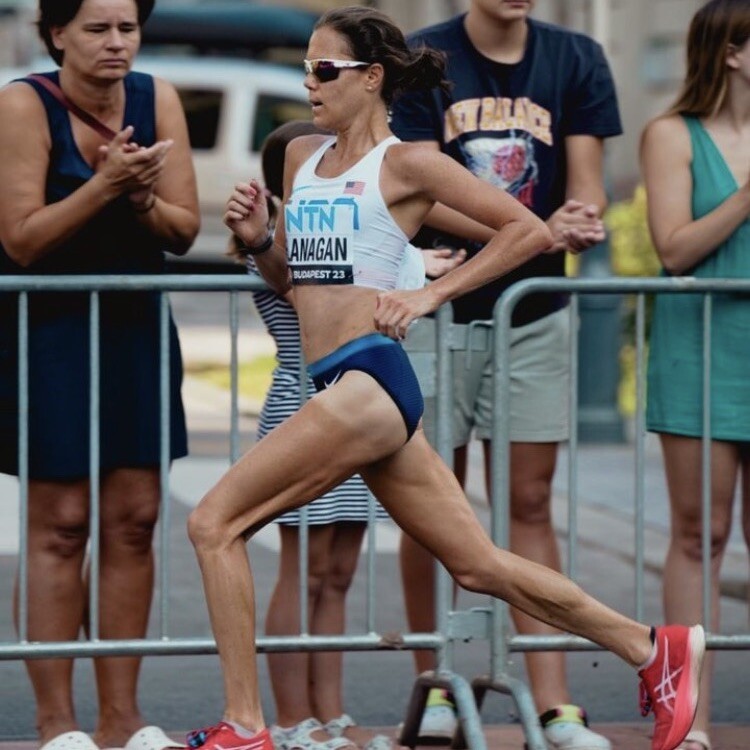
After promising high school running careers in Illinois, both Flanagans (no relation to Shalane) ran at the University of Washington, overlapping for a year. Now, they live across the street from each other in Boulder, Colorado, where they typically share miles at least once if not twice daily. Kaylee cheered Lindsay on in Budapest; afterward, they vacationed in Croatia.
They’ve spent the past few months, uncharacteristically, half a world apart, though Kaylee frequently pops by Lindsay’s house to water plants and make sure the pipes don’t freeze. But they’re reuniting in Florida, lining up together at the Trials.
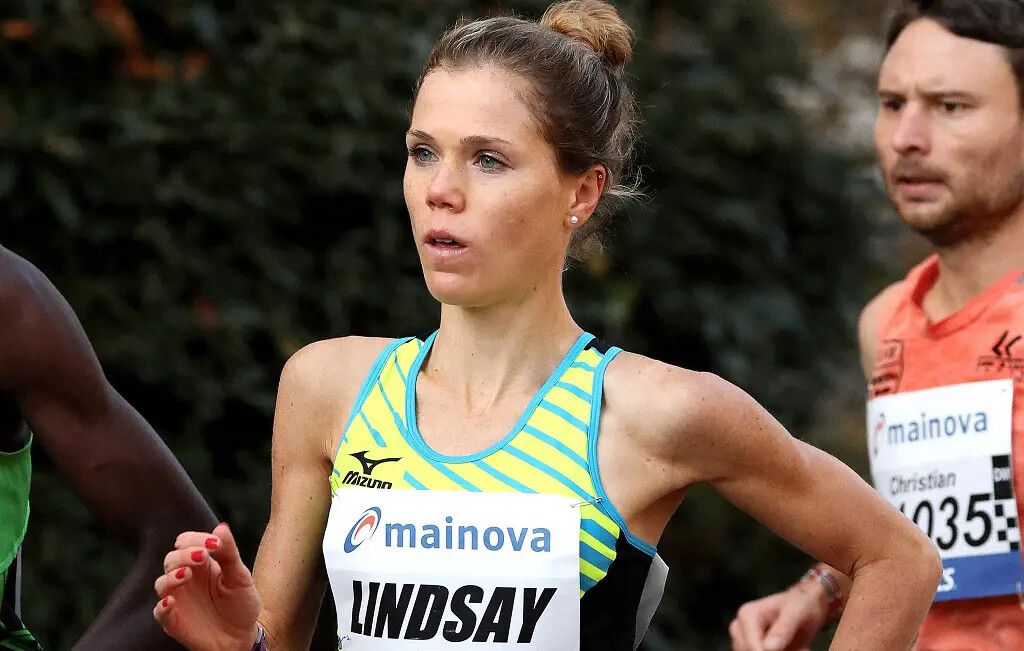
The Flanagans aren’t the only siblings competing in Orlando on February 3; the field also includes brother and sister Kaylee and Austin Bogina and twins Isabel and Monica Hebner. But they’re unique in also being athlete and coach—Lindsay has guided Kaylee’s training for about two years.
And in her third Trials, Lindsay stands out as a top, if under-the-radar, pick to make the U.S. Team.
The Asics-sponsored runner, 33, does most of her workouts alone. Her coach is remote, and she has no training group or partner capturing evidence for Instagram. Yet out of the limelight, Lindsay has spent nearly a decade preparing for a moment just like this one. “Every workout, every season, every race cycle has been meticulously chosen,” Kaylee, 28, said of her sister. “Trust me, she will be one to watch out for in Orlando.”
A steady ascent
As close as they are, the two sisters forged different paths from college to the Trials. Lindsay made her marathon debut the January after graduating. At the 2015 Houston Marathon, she ran 2:33:12, good for ninth place and a slot in the 2016 Trials. On a hot day in Los Angeles the following February, she paused to vomit around the 21-mile mark, then finished 14th in 2:39:42.
Through 20-some marathons since—so many she’s lost count—she’s gradually, if quietly, established herself. Her next breakthrough came at the 2016 Frankfurt Marathon, where she finished fourth in 2:29:28. She notched top-10 finishes in Boston and Chicago in 2019, and headed into the 2020 Trials ranked 12th. That’s exactly where she finished, running 2:32:05.
Post-pandemic, she was coaching herself but seeking mentorship. Her agent connected her with Benita Willis, a four-time Olympian for Australia and gold medalist at the 2004 World Cross Country Championships. After an hour-long conversation, Lindsay realized she wanted Willis to fully take the reins of her training.
The pair became fast friends, and under Willis’s guidance, Lindsay is now even faster. She first lowered her personal best to 2:26:54 in April 2022 at the Paris Marathon. Next, Willis suggested Lindsay make her first Australian trip to run Gold Coast in July.
The race would give the pair the chance to meet in person for the first time, and with her victory, Lindsay had an opportunity that her coach, a 2:22:36 marathoner, had missed. “I ran big races, but I never won a marathon or broke a course record,” Willis said. “I wanted Lindsay to have that sort of experience well before the Olympic Trials.”
(01/26/24) Views: 118Cindy Kuzma
Japan´s Mizuki Matsuda is aiming to become the first four-time winner at the Osaka Women’s Marathon
Course record-holder Mizuki Matsuda is aiming to become the first four-time winner at the Osaka Women’s Marathon, but the Japanese runner will face stiff opposition at the World Athletics Platinum Label road race on Sunday (28).
Matsuda is one of three women to have won in Osaka three times, her latest victory coming just two years ago in a PB and course record of 2:20:52. Her last race was five months ago at the World Championships in Budapest, where she finished 13th.
She didn’t compete at the Marathon Grand Championships in October, Japan’s main selection race for the Olympic Games. But the top-placed Japanese runner in Osaka could potentially bump off the provisional third team member, Ai Hosoda, if they run faster than 2:21:42 – Hosoda’s best clocking within the qualifying window. The Nagoya Marathon in March will be the final opportunity for Japanese runners to claim an Olympic berth.
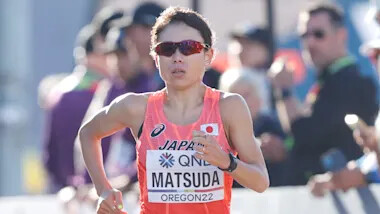
Matsuda’s motivation will be high, but she’ll face three formidable opponents from overseas.
Workenesh Edesa is the fastest in the field, boasting a PB of 2:18:51 from the 2022 Berlin Marathon. She has finished on the podium in 10 of her 15 career marathons, and she has bettered 2:21 in her past four races over the classic distance. Last year she won in Prague, then went on to clock 2:19:40 in Berlin.

Uganda’s Stella Chesang could be something of an underdog. The 2018 Commonwealth 10,000m champion has only contested one marathon to date, but she clocked a national record of 2:20:23 to finish third in Hamburg.
Edesa’s fellow Ethiopian Meseret Gola will also be highly motivated on Sunday, having finished second last year. In fact, she has finished runner-up in six of her 10 most recent marathons – including at the 2022 Seville Marathon, where she set her PB of 2:20:50 – so will be keen to claim the top spot of the podium.
Matsuda won’t be the only Japanese runner vying for a last-minute call-up to the Olympic team. Sayaka Sato represented Japan at last year’s World Championships in Budapest, following a 2:22:13 PB run in Berlin in 2022. Honami Maeda won the Marathon Grand Championships ahead of the Tokyo Olympics but finished seventh at the latest edition in October. Natsumi Matsushita, meanwhile, finished fifth in that race and will be hopeful of showing improved form on Sunday.
Leading elite entries
Workenesh Edesa (ETH) 2:18:51
Stella Chesang (UGA) 2:20:23
Sisay Meseret Gola (ETH) 2:20:50
Mizuki Matsuda (JPN) 2:20:52
Sayaka Sato (JPN) 2:22:13
Honami Maeda (JPN) 2:22:32
Natsumi Matsushita (JPN) 2:23:05
Rie Kawauchi (JPN) 2:25:35
Ayano Ikemitsu (JPN) 2:26:07
Yuna Daito (JPN) 2:26:09
Daeun Jeong (KOR) 2:28:32
Kaena Takeyama (JPN) 2:29:20
Militsa Mircheva (BUL) 2:29:23
(01/27/24) Views: 114World Athletics
How to Use the Run/Walk Method for Faster Times and Longer Distances
Adding walk breaks to your training runs and races just might provide your ticket to faster finishes or longer distances.
Many runners have a few dirty little secrets, like not quite making it to the bathroom or chafing in unmentionable spots. But one thing many runners also won’t admit to... walking. That is, unless you embrace the run/walk method, which involves adding precisely planned walk intervals to your runs.
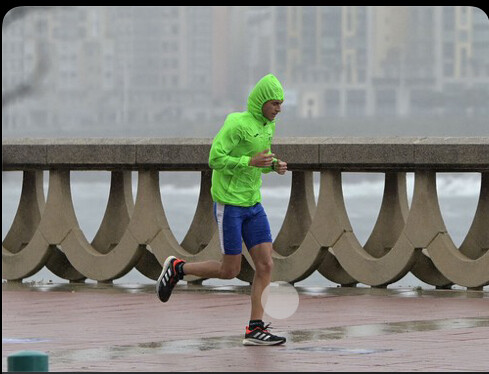
The run/walk method can offer runners many benefits, including helping to fight off fatigue. It can even help you clock faster finish times and maybe even win a race that you thought was out of reach. Just look to Marc Burget for evidence. A ultramarathon run/walker, Burget, 50, won the 2016 Daytona 100 (miles) in 14 hours and 14 minutes which, at the time, was a course record.
“The idea that you should move from walking to running is the wrong framework,” Burget, director of operations at Bailey’s Health and Fitness in Jacksonville, Florida tells Runner’s World. “Instead, putting walks in my race plans allows me to go the whole 100 miles without becoming tired.”
Research supports Burget’s experience. According to a 2016 study published in the Journal of Science and Medicine in Sports, of the 42 runners studied, those who used the run/walk method in a marathon reported less muscle pain and fatigue and finished with similar times, compared to those who only ran.
So, while it’s true that runners typically move faster than walkers, it’s also true that during long races or training runs, taking well-timed walk breaks can help you reach your goals. To understand the run/walk method, here are common myths and truths about the training and racing strategy, plus how to test out the system for yourself.
Myth: Only Slow Runners Use the Run/Walk Method
Truth: Slow Walks Support Faster Finishes
In recent years, more runners and experts have learned that zone 2 running (that is, lower effort runs), improves many elements of fitness and supports your ability to run both long- and short-distance races without fatiguing as quickly.
Whatever distance you race, it’s important to manage your energy levels from the start, so you can make it to the finish without bonking. While fuel plays a role in maintaining energy, how you pace a race is also crucial.
“There’s a myth that a lot of runners perpetuate about banking time,” Chris Twiggs, chief training officer at Galloway Training Programs tells Runner’s World. “The time bank doesn’t exist. The bank that does exist is the bank of energy. When you walk during your run, you are investing in the bank of energy.”
Burget agrees. The first time he ran 100 miles, he planned to run the whole way, but because of exhaustion, he ended up walking about 20 miles. Once he started to train with the run/walk method, he cut his walking down to 10 to 15 miles thanks to 30-second walk intervals. Now, with experience, most of his ultras include eight to 10 miles of walking and he either alternates three minutes of running and 30 seconds of walking, or 0.3 miles of running and 30 seconds of walking, depending on his race strategy and goals.
How to use the run/walk method to get faster:
If you have your mind on a PR, the run/walk method could help you get there. You just have to practice.
“Your walk should be brisk, but not work,” says Burget. “You want your heart rate to drop down.” You also want to give your muscles a break from the intense effort to allow for a midrun recovery.
Because you’re walking, you also need to make your run intervals faster than if you’re going for a steady-state run. For example, let’s say you want to average an 8-minute per mile pace for a marathon. Try running a 7:40 pace for nine-tenths of a mile, then walk for 30 seconds, so that you finish a mile in eight minutes. “You’re not losing 30 seconds,” Burget explains. “You’re moving forward, but part of your pace is a walk.” Likewise, if you want to maintain an 11-minute pace, you could do a 40-second walk every three minutes of running at around a 10:20 pace per mile.
If you have been running for a bit but you don’t know where to start with your interval ratios and paces, do a “magic mile” run, both experts say. This will help set your goal pace for a race. With that magic mile time in mind, set your interval ratios, keeping in mind that generally, the faster your average pace, the longer your run intervals. For example, if you’re aiming for an 8-minute mile average pace, you may run three minutes and walk 30 seconds. But if you’re aiming for a 10-minute mile average pace, you may run 90 seconds and walk 30 seconds.
If you’re a beginner, Twiggs suggests starting your workouts by running for 30 seconds and walking for 30 seconds. If that seems too easy or you can feel yourself wanting to run more keep the 30-second walk, but run slightly longer between walks, he says.
You can keep track of your ratio using time or distance. Twiggs uses time, while Burget often pays attention to the mile markers in his races, walking for the last tenth of each mile. Play around with what works best for you.
“It took me a few months to figure out the ratio that works for me,” says Burget, who has also run a 2:50 marathon by alternating six-minute runs and 15-second walks.
When you want to actually increase your average pace per mile, do another magic mile to see how much faster you can go, and then either increase the speed of your run intervals, add more time to the run intervals, or cut down on the time of your walk breaks.
Myth: Only Beginners Take Walk Breaks
Truth: The Run/Walk Method Can Work for Everyone
While there are no statistics on how many runners use walks in their training or in their races, how long they’ve been running, or how “tired” any runner is when they walk, we can confidently say that runners who strive to incorporate walks into their runs are all ages and all levels of fitness.
Both Burget and Twiggs run ultras, something less than 1 percent of Americans did in 2023, and ultrarunners typically aren’t new to the running game.
In fact, planning your run/walk strategy for races can take practice so many experienced runners and walkers may turn to it. For example, Burget has learned to time his walks to match the location of hydration stops and elevation gain in his ultras so he can maximize his running potential. But that came with lots of practice using the run/walk method.
How to use the run/walk method to advance your race results:
Always study the details of your upcoming race and consider creating a strategy to match walks with water stations and hills. “Looking at the landscape when planning your run/walk is important,” says Burget.
“Walking hills is smart because we want to do what we can to conserve our energy so that when we expend our energy we get the most bang for our buck,” says Twiggs.
Running up hills during training will help you build leg strength, but in a race it could decrease your pace (and finish time) because it takes so much effort, adds Twiggs. Without planning, you might find yourself running up a hill (wasted effort) and then walking a descent as you recover. Planning ahead can help you flip that to maximize your energy and increase your speed.
The point: Go into your race with a clear plan that has specifically planned walk breaks so you’re not just slowing it down when you feel like it, which could be a detriment to performance, Twiggs explains. Playing around with your run/walk ratios during training will also help you set this in stone come race day.
Myth: Being a Run/Walker Will Limit Your Race Opportunities
Truth: Walks Can Help You Participate in Longer, Harder Races
The reason running is defined as “high” intensity while walking is considered “low to moderate” intensity is because it takes more energy to run than to walk. Typically, your heart beats more frequently when you run than when you walk in order for your body to produce that extra effort.
Break up those runs with walks, though, and you are giving your heart, muscles, bones, and joints a break. It’s helps with the deposit into your energy bank, as Twiggs says. The benefit of those deposits? You may be able to add to your race schedule, say by running a half marathon instead of a 10K, if that has seemed out of reach. If you think you can’t run a marathon, could you run/walk one?
To prove the point that adding walks into long runs can cut down on fatigue and help you go longer (or even run more frequently), take another example from Burget: In 2023, he ran seven marathons in seven consecutive days, aiming for a sub-three-hour finish for each race. While he ran just over three hours in two of the races, his other times ranged from 2:52:15 to 2:58:57. “I used the same interval for each race,” Burget says, “a 20-second walk during each mile.”
How to use the run/walk method to run longer:
While you experiment with run/walk intervals, try to notice how you feel in comparison to runs that don’t include walks. Do you feel like you can increase your typical run distance or duration by a half-mile or 10 minutes?
To progress to longer distances, you have a variety of options: You can increase the pace of your runs or shorten the walk breaks you take, says Twiggs, while still running for the same overall amount of time. (This will increase your average pace.) Or you can maintain your pace and your ratio, but add more rounds of intervals, so you run for a longer duration and therefore, distance, which may come easier than only running because of the added recovery element. Do what feels best for you.
In addition to helping you conquer longer distances, the run/walk method might increase your race options by also allowing you to take part in multi-day events, such as runDisney weekends or Philadelphia’s Marathon Weekend, which includes an 8K, half, and marathon.
While some runners, of course, take part in these events without using the run/walk method, “we’ve seen anecdotally that for millions of runners, this allows them to run races they would not have otherwise considered,” says Twiggs, because it can allow for that quicker recovery.
(01/28/24) Views: 113Ugandan middle-distance runner Prisca Chesang given two-year ban for masking agent
On Friday, the Athletics Integrity Unit (AIU) issued a two-year ban for two-time U20 world championship medalist Prisca Chesang of Uganda. Chesang tested positive for the banned diuretic and masking agent furosemide.
Chesang’s positive test came out-of-competition, at a training camp in Kapchorwa, Uganda, on Sept. 14. She was in Kapchorwa preparing for the women’s mile at the 2023 World Road Running Championships in Riga, Latvia, where she placed 18th overall, on Oct. 1.
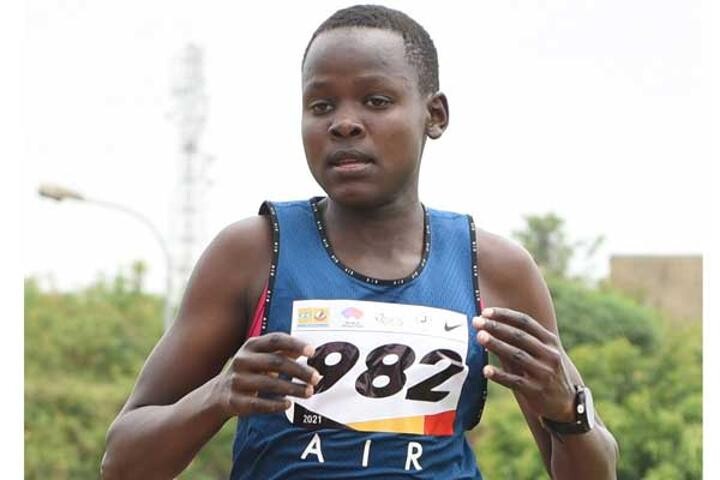
The 20-year-old is a two-time world U20 medalist in the women’s 5,000m, winning bronze at both the 2021 and 2022 U20 championships. According to the AIU, they did not discover any evidence that Chesang’s actions were intentional and therefore she was only given a two-year ban instead of four years. Chesang admitted to the Anti-Doping Rule Violation (ADRV); her result from the 2023 World Road Running Championships will be disqualified, and she will serve a two-year ban, until Dec. 6, 2025.
Furosemide is a diuretic, meaning it increases urine production, eliminating excess water and salt from the body. (It is also used for losing weight.) Furosemide also serves as a masking agent for other performance-enhancing substances that leave the body through urination, and therefore show up in a urine test. The drug has been prohibited by the World Anti-Doping Agency (WADA) for decades.
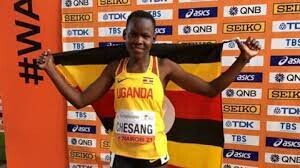
Chesang is one of Uganda’s top up-and-coming distance runners and represented the East African nation at the 2020 Tokyo Olympics in the women’s 5,000m (but failed to advance from the heats). Her top senior championship finish was a seventh-place result at the 2023 World XC Championships in Bathurst, Australia, helping Uganda’s women’s team win bronze.
Chesang is only the second female Ugandan runner to be suspended by the AIU. The country’s first came in Nov. 2023, when Janat Chemusto was given a four-year ban for the use of a prohibited substance.
(01/26/24) Views: 108Marley Dickinson
Paul Chelimo is set to make marathon debut at Olympic Trials
Paul Chelimo, an Olympic 5000m silver and bronze medalist, will make his marathon debut at the U.S. Olympic Trials on Feb. 3 in Orlando.
“Ever since I was a kid, I dreamed of running a marathon… The day has come- this is it!” was posted on his social media Friday.
Chelimo, 33, qualified for the marathon trials by running a 1:02:22 half marathon last April 2, safely quicker than the 1:03:00 minimum to get into the field.
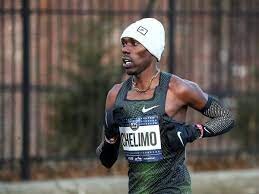
He didn’t publicly commit to racing the marathon trials until now. He could still contest the track trials in June.
“Let’s start by Orlando... then we will see!” Chelimo’s agent wrote in an email when asked about track trials.
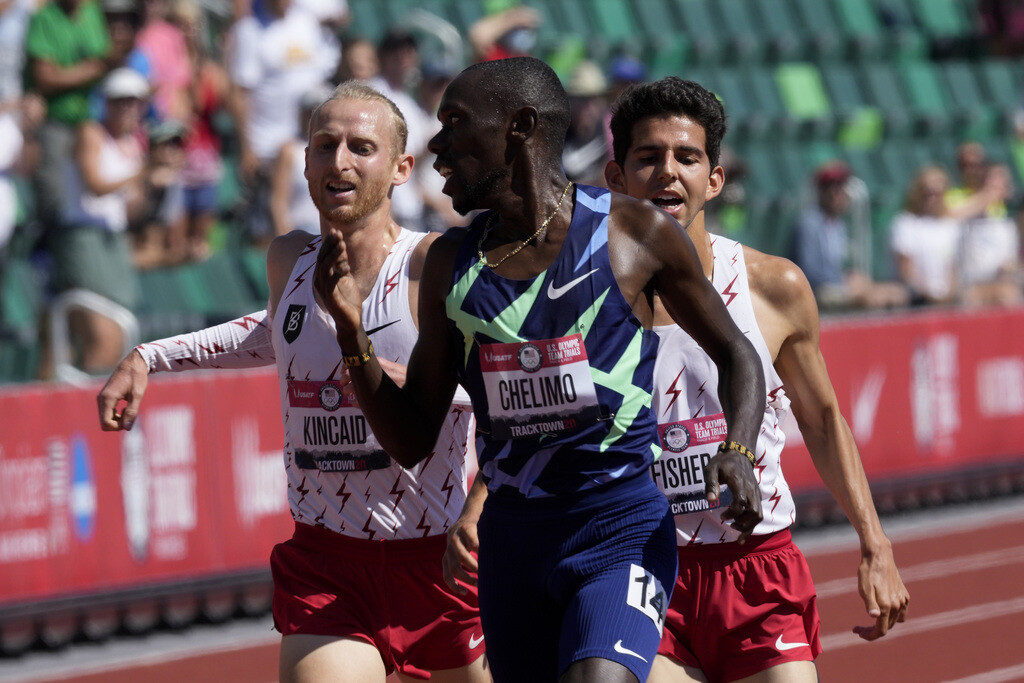
At marathon trials, the top three finishers on Feb. 3 are likely to make up the team for Paris. Since Chelimo has never raced a marathon, he also must run 2:11:30 or faster to hit a minimum qualifying time for Olympic eligibility.
Chelimo made five of the last six Olympic or world outdoor championships teams on the track in the 5000m. He won Olympic silver in 2016 and bronze in 2021, the latter being the lone U.S. men’s distance medal at the Tokyo Games.
Now, he joins a recent list of American global track medalists to move up to the marathon after Kara Goucher (2007 World 10,000m silver), Shalane Flanagan (2008 Olympic 10,000m silver), Galen Rupp (2012 Olympic 10,000m silver) and Bernard Lagat (world 5000m medals in 2007, 2009 and 2011).
Jenny Simpson, a world champion and Olympic bronze medalist at 1500m, also plans to make her marathon debut at the Feb. 3 trials.
Rupp made the 2016 Olympic marathon team in his debut at the distance at those trials. Molly Seidel did the same for the Tokyo Games. Each won a bronze medal in their first Olympic marathon.
Rupp, eyeing a fifth Olympics, headlines the men’s trials field along with Conner Mantz, the fastest American marathoner in 2022 and 2023 going for his first Games.
(01/27/24) Views: 107Olympic Talk
AIU ban James Karanja for four years
James Karanja, the athlete who competed and won a race during his provisional suspension, has been banned for four years by the AIU.
Kenyan long-distance runner James Karanja has been slapped with a four-year ban by the Athletics Integrity Unit for violating an anti-doping rule.
Karanja tested positive for the use of 9-norandrosterone, 19-noretiocholanolone, Nandrolone, and his results from September 10, 2023, have been disqualified.
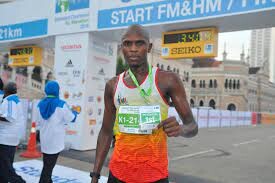
19-norandrosterone and 19-noretiocholanolone are Metabolites of 19-nortestosterone (Nandrolone) (and 19-norandrostenedione) which are Prohibited Substance under the WADA 2023 Prohibited List under the category S1.1 Anabolic Androgenic Steroids (AAS). They are non-specified substances prohibited at all times.
The AIU explained that the athlete failed to respond to any of their messages and therefore he will be banned for four years unless he reaches out and proves that the Anti-Doping Rule Violations were not intentional.
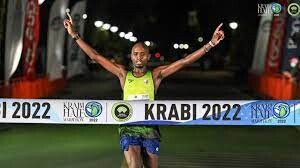
“The Athlete has not demonstrated that the Anti-Doping Rule Violations were not intentional. Therefore, the mandatory period of Ineligibility is a period of Ineligibility of four (4) years,” the AIU further noted.
Meanwhile, after being provisionally suspended last year, Karanja breached the AIU rules and went ahead to compete and win the Tropical Rainforest Run, a trail half-marathon in Tawau Hills, Malaysia.
The AIU makes it clear that during a provisional suspension, an athlete is not supposed to compete as they conduct their investigations.
According to the AIU, Karanja tested positive for the prohibited substance Norandrosterone during an in-competition test at the 2023 Kuching Marathon, where he finished fourth and was eligible for prize money.
(01/27/24) Views: 107Abigael Wuafula
World and Olympic champions to compete at Ras Al Khaimah Half Marathon
The powerful list of elites confirmed for the 2024 Ras Al Khaimah Half Marathon continues to grow with former world marathon champion Tamirat Tola, Chicago Marathon winner Seifu Tura and former half marathon world record holder Ababel Yeshaneh joining the starting line-up.
The 17th edition of the event on February 24 will read like a Who’s Who of international distance running as a wealth of elites take advantage of the beautiful weather conditions in the countdown to both the London Marathon and the Paris Olympics.
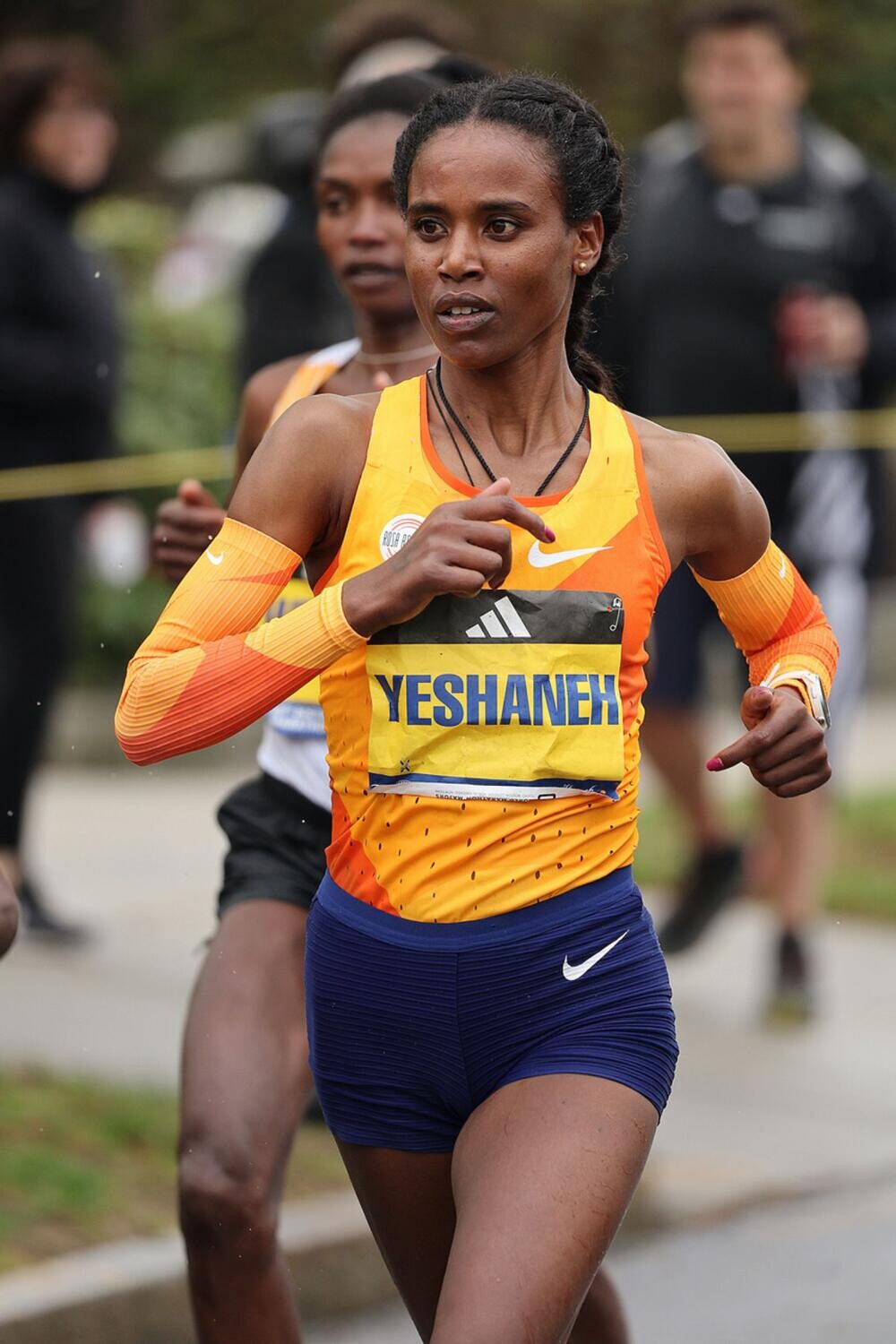
Hosted by the Ras Al Khaimah Tourism Development Authority (RAKTDA), the Ras Al Khaimah Half Marathon will see Tola make his debut in the emirate just three months after winning the 2023 New York Marathon.
The Ethiopian has a personal best of 59:13 and is no stranger to the flat, fast roads of the Middle East having won the Dubai Marathon in 2017.
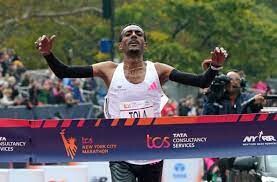
Fellow Ethiopian Seifu Tura returns to the race route on the iconic Al Marjan Island with a half marathon personal best of 58:36, which he set when finishing fourth at the Ras Al Khaimah Half Marathon two years ago.
Now 26, Tura is an established distance runner with a number of impressive results on his CV most notably a superb victory in the 2021 Chicago Marathon.
He also has four other top six finishes in Major marathons including a runners-up spot in Chicago in 2022 and two fifth place finishes in London and Chicago last year.
On the women’s side, Ababel Yeshaneh will return to the scene of one of her greatest victories next month. The 32-year-old Ethiopian will kick off her 2024 season in Ras Al Khaimah and has fond memories of Al Marjan Island having set the then Half Marathon World Record of 64:31 when she claimed the women’s title there in 2020.
That time remains her personal best at the distance, although in the full marathon she also has two runner-up finishes to her name in Chicago (2019) and Boston (2022) as well as a third place finish at the New York Marathon in 2021.
The three Ethiopians will join elite fields that already include men’s defending champion Benard Kibet Koech (PB 58:45) and 2017 Ras Al Khaimah winner, reigning Olympic marathon champion and three-time World Half Marathon champion Peres Jepchirchir (PB 65:06).
As well as a wealth of elite distance runners, the Ras Al Khaimah Half Marathon will also offer races at 10km, 5km and 2km runs for athletes of all ages and abilities. Registration is open at rakhalfmarathon.com.
(01/29/24) Views: 107khaleej Times
Five exercises to amplify ankle strength and stability
Adding a few ankle exercises into your routine can help you stay strong and steady during the final tough miles of any long training run or race, whether you’re tackling roads or trails. You’ll also avoid getting sidelined by a strained ankle or repetitive stress injury.
A runner’s feet endure a continuous impact that, over time, can take a toll on the network of tendons and ligaments in the ankles. Toward the end of a long run or hard training session, fatigue and low glycogen levels cause your feet’s responsiveness of to changes in terrain to diminish, affecting the swift micro-movements crucial for maintaining balance. This decline in agility places an increasing burden on your ankles, subjecting them to prolonged stretching and strain.
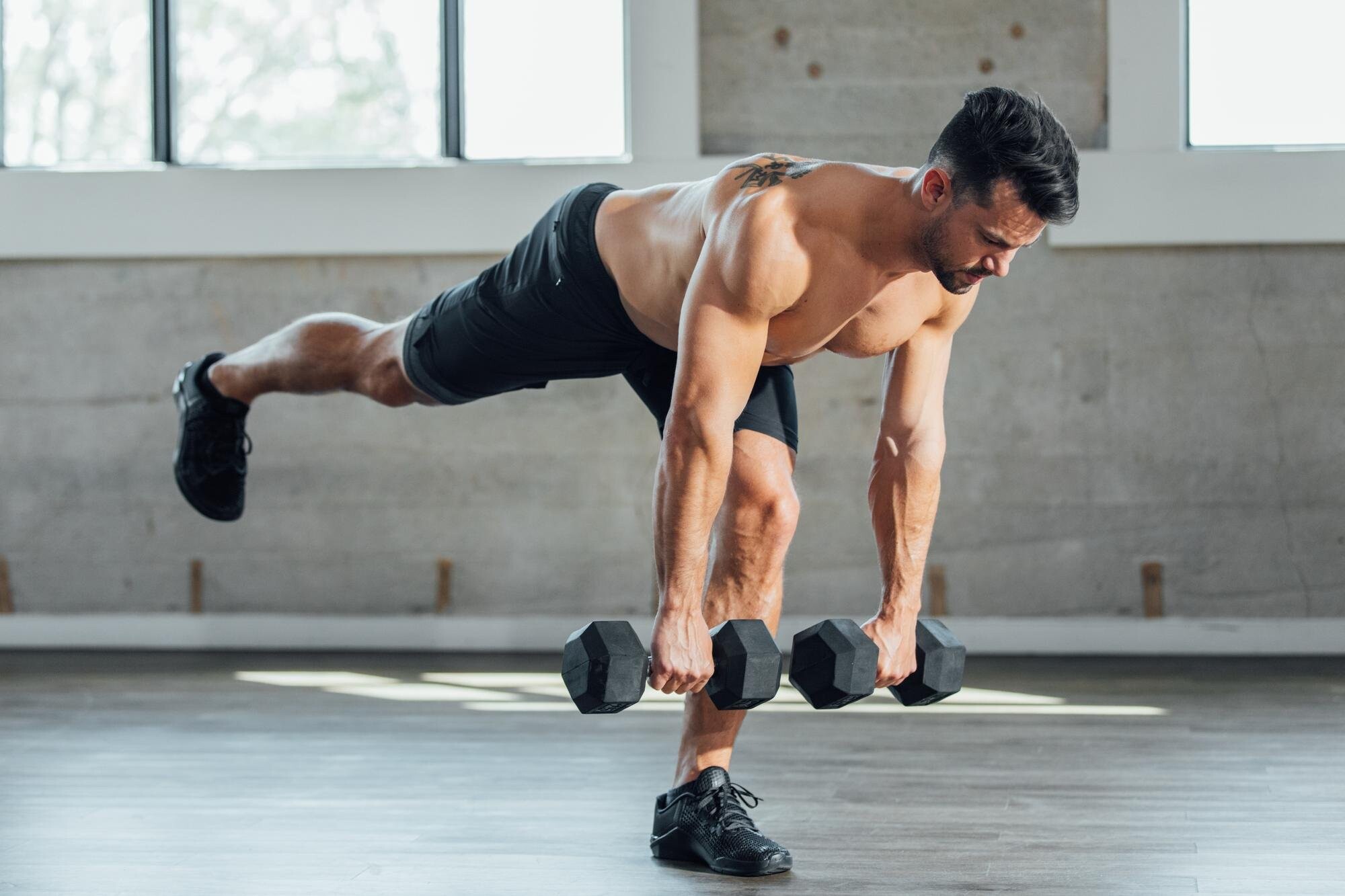
The result is not only discomfort, but disarray in your proprioceptive system—the internal compass that guides your body’s position and movement—causing soreness, slips and ankle rolls. These exercises not only fortify your ankles but also act as a safeguard against the pitfalls of a fatigued and under-prepared lower extremity.
1.- Hop and hold
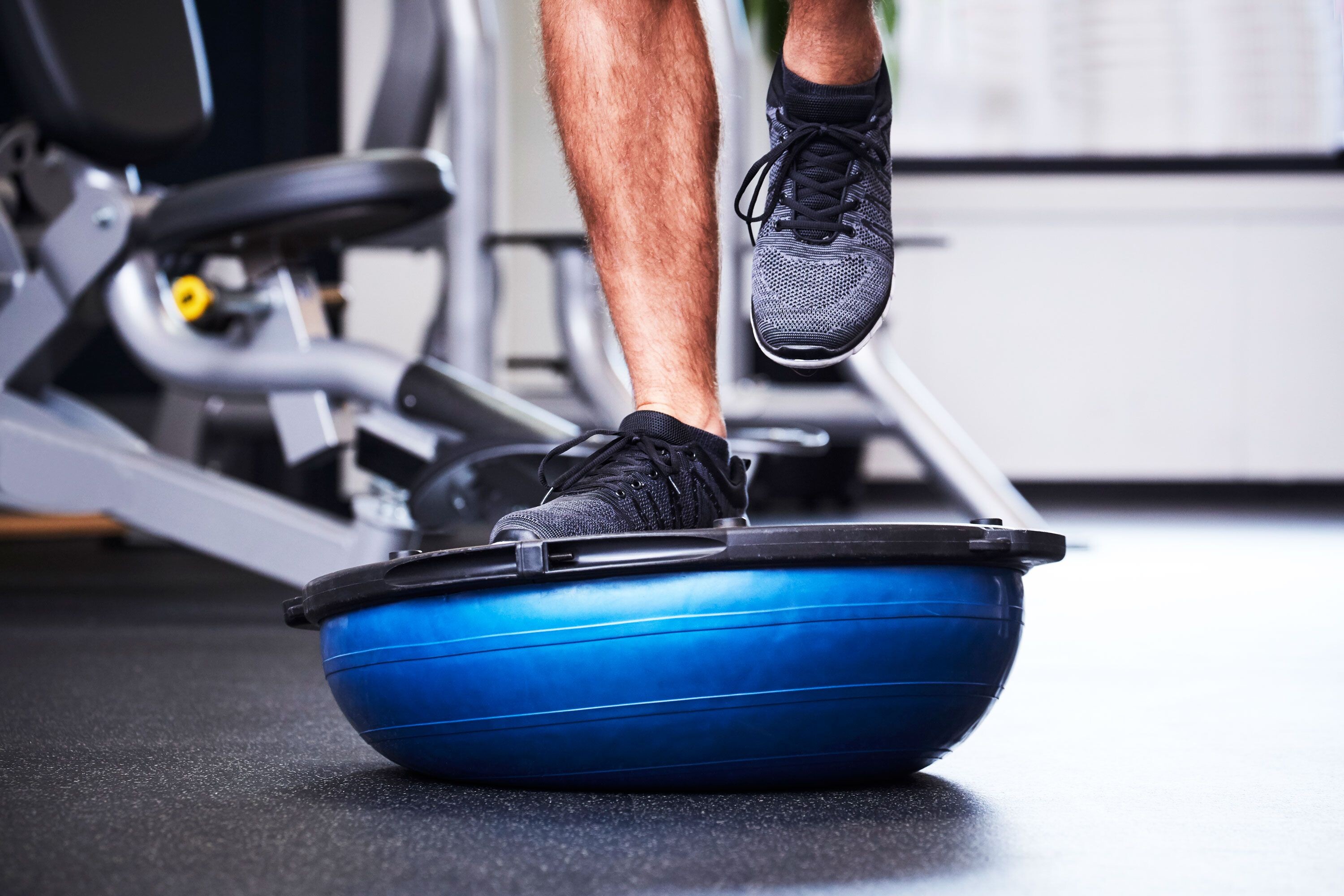
Stand with your feet hip-width apart, maintaining a straight and upright posture. Engage your core to ensure stability throughout the exercise.
Lift one foot slightly off the ground, balancing on the other.
With the grounded foot, perform a small, controlled hop. Focus on using the muscles around the ankle to control the movement. Upon landing, immediately shift your focus to holding the position. Balance on the foot that landed, ensuring that your ankle remains stable. Imagine rooting your foot into the ground.
Try to hold the position for 10-15 seconds, before switching to the other leg. Perform two to three sets of 10-15 reps on each foot, gradually increasing the duration of the hold as your ankle strength improves.
Modify this one if you find it challenging at first: you can hold onto a stable surface (like a chair or railing) for support until you build confidence and strength.
2.- Lateral shuffle
This exercise enhances ankle stability by engaging lateral movement and weight transfer.
Stand with feet hip-width apart, maintaining a slight bend in the knees.
Take a lateral step to one side, followed by the other foot. Move with controlled and deliberate steps.
Keep a low and athletic stance throughout the shuffle with your core engaged.
Try four x 10 steps to the left, then to the right.
3.- One-legged medicine ball toss
This exercise enhances ankle strength, stability and proprioception.
Stand on one leg with a slight bend in the knee for stability.
Hold a medicine ball with both hands, positioned in front of your chest.
While balancing on one leg, toss the medicine ball in the air and catch it. Focus on stability during the tossing and catching phases.
After completing a set, switch to the other leg. Try three sets of 10 tosses to start.
This exercise can be done with a cement wall, bouncing the ball gently off the wall with each toss and from both forward and sideways directions—it’s also a fun exercise to do with a partner.
4.- Eccentric calf raises
Try doing these on a step, lowering let your heels a few centimetres below the step with each one, to get a slightly deeper stretch.
Stand with feet hip-width apart and rise onto your tiptoes. Lower heels to a slow count to five.
Let your heels touch the ground, then immediately rise onto your toes again.
The key phase in this exercise is the eccentric one (the lowering part) when the tendon and muscles lengthen to control the downward path of your body.
5.- Single-leg Romanian deadlift
The single-leg Romanian deadlift targets multiple areas for runners—it not only strengthens the hamstrings and glutes but also enhances balance and stability, crucial for maintaining that strong foundation during tired miles.
Begin standing on one leg, with a slight bend in the knee. Hinge at your hips, pushing them backward while simultaneously lowering your upper body towards the ground. Keep your back straight and your chest lifted.
As you hinge forward, extend your non-standing leg straight behind you. Work to keep your extended leg, hip, and torso in a straight line, forming a “T” shape with your body.
Reach your hands towards the ground, going as low as your flexibility allows. Engage your hamstrings and glutes to return to the upright position, bring your extended leg back to the starting position, and repeat.
Aim for three sets of 10-12 repetitions on each leg.
These exercises collectively target ankle strength, stability and mobility, providing a comprehensive approach to help you maintain an unshakeable foundation. As with any exercise, start with a light load, or use your body weight and gradually increase as your strength and technique improve.
(01/29/24) Views: 103Keeley Milne
2017 Valencia Marathon champion to compete in first marathon after doping ban
The 2017 Valencia Marathon champion will be keen to make a comeback to winning ways this year after successfully serving his doping ban.
An estimated 13,000 runners from more than 70 countries have been confirmed for the Marrakech International Marathon (MIM), scheduled for Sunday, January 28.
Sammy Kitwara, a former World Half Marathon Championships bronze medalist will bid to make an impression in his first marathon after concluding his doping ban.
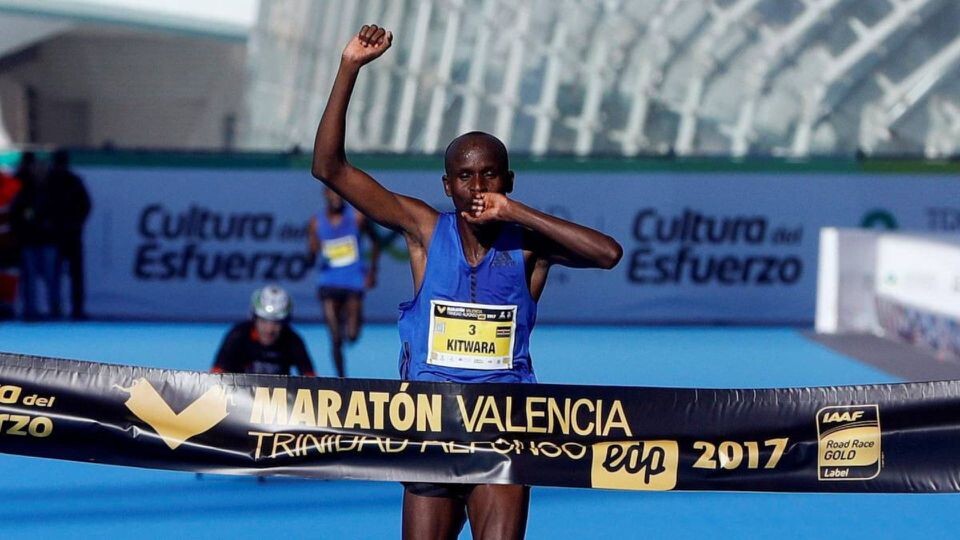
The 2017 Valencia Marathon champion was banned by the Athletics Integrity Unit (AIU) back in 2019 for the presence of Nanning Terbutaline, a drug used as a "reliever" inhaler in the management of asthma symptoms.
His positive test came from the Seul International Marathon in March 2019 where he took seventh place with 2:09:52. Kitwara said he took the drug without knowing it was banned by WADA. He had also failed to consult with a doctor to obtain a therapeutic use exemption (TUE).

Kitwara will be joined by compatriot Nicholas Kirwa and the Kenyan duo will be up against top runners including Ethiopia’s Hiribo Shano Share and Omar Ait Chitachen.
Speaking at a press conference, Mohamed Knidiri, the Grand Atlas (AGA) and director of this international competition indicated that the marathon is organized under the high patronage of HM King Mohammed VI.
“Over the years, MIM has become a school for promoting and launching great champions of this discipline, who have left their mark on the international scene, particularly among Moroccan athletes.
“Thanks to upstream planning and operational management experienced in major competitions, the MIM aims not only to obtain the 11th place in the world obtained in 2013 but, even better, to become the essential international meeting for all the stars of this sporting discipline, like its glorious position in 2012 when it was the only marathon on the African continent qualified for the London Olympic Games,” he said.
He also hoped that this edition would be marked by the achievement of new records, particularly among the men.
(01/26/24) Views: 101Abigael Wuafula


